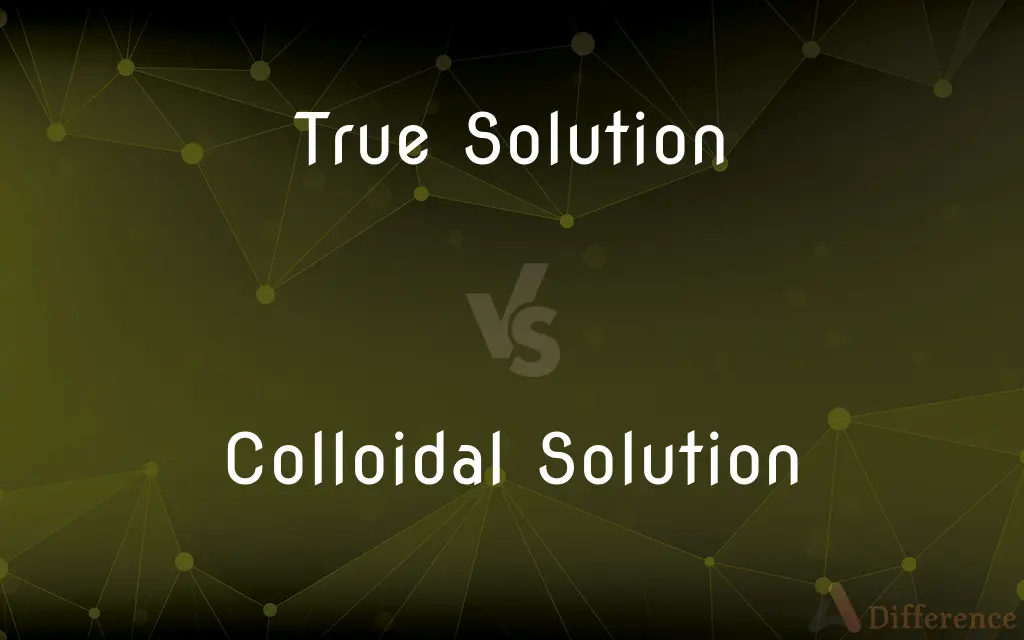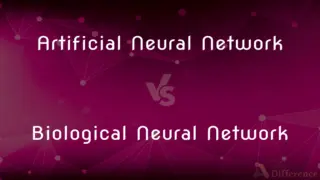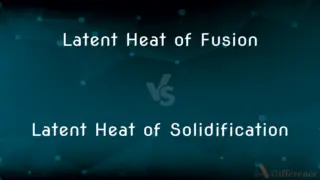True Solution vs. Colloidal Solution — What's the Difference?
By Tayyaba Rehman — Published on January 9, 2024
A True Solution is a homogeneous mixture at the molecular level, while a Colloidal Solution contains larger particles suspended within a medium.

Difference Between True Solution and Colloidal Solution
Table of Contents
ADVERTISEMENT
Key Differences
A True Solution is a homogeneous mixture where the solute is completely dissolved in the solvent at the molecular or ionic level, resulting in a clear and stable solution. Examples include saltwater or sugar dissolved in water. In contrast, a Colloidal Solution (or colloid) is a mixture where the solute particles are larger than those in a true solution but small enough to remain suspended in the solvent, leading to a heterogeneous mixture. Milk and fog are common examples of colloidal solutions.
The particle size in a True Solution is typically less than 1 nanometer, which is small enough to pass through most filters and membranes. This small size also prevents the scattering of light, making true solutions transparent. In Colloidal Solutions, particle sizes range from 1 to 1000 nanometers. These larger particles can scatter light (Tyndall effect) and are usually visible under a microscope.
In True Solutions, the dissolved solute does not settle upon standing and cannot be separated by filtration. The uniform distribution of particles ensures consistency throughout the solution. Colloidal Solutions, however, may exhibit the settling of particles over time and can sometimes be separated into their components by special techniques like centrifugation.
The stability of a True Solution is due to the strong interaction between the solute and solvent at the molecular level. There's no risk of the solute separating out under normal conditions. Colloidal Solutions, while generally stable, can be destabilized by factors like heating or adding certain substances, causing the particles to aggregate and settle out.
In summary, True Solutions and Colloidal Solutions differ primarily in particle size, homogeneity, light scattering properties, and methods of separation. True Solutions are molecularly homogeneous and clear, while colloids have larger particles that are stable but not as uniformly distributed as in true solutions.
ADVERTISEMENT
Comparison Chart
Particle Size
Less than 1 nanometer
1 to 1000 nanometers
Homogeneity
Homogeneous at molecular level
Heterogeneous, particles suspended
Visibility
Transparent, particles not visible
Particles can scatter light, visible under microscope
Filtration
Can pass through filters
Cannot pass through ordinary filters
Stability
Stable, particles don't settle
May settle upon standing or under influence
Examples
Salt in water, sugar in tea
Milk, fog, whipped cream
Compare with Definitions
True Solution
True Solutions are transparent and stable.
Sugar dissolved in water is a true solution, remaining uniform and clear.
Colloidal Solution
Particles in Colloidal Solutions do not settle quickly.
Paint is a colloidal solution where pigments remain suspended for a long time.
True Solution
A True Solution is a clear, homogeneous mixture at the molecular level.
Salt completely dissolves in water, forming a true solution.
Colloidal Solution
Colloidal Solutions exhibit the Tyndall effect.
The fog, a colloidal solution, scatters car headlights due to the Tyndall effect.
True Solution
In True Solutions, solute particles are too small to be seen.
In a true solution like vinegar, the acetic acid molecules are completely dissolved.
Colloidal Solution
Colloidal Solutions are heterogeneous mixtures.
Jelly is a colloidal solution where pectin particles are dispersed in water.
True Solution
True Solutions do not scatter light significantly.
A true solution of glucose in water is transparent and does not exhibit the Tyndall effect.
Colloidal Solution
A Colloidal Solution contains particles larger than those in a true solution.
Milk is a colloidal solution with fat droplets dispersed in water.
True Solution
True Solutions can pass through standard filters.
When filtering saltwater, the salt remains in the true solution.
Colloidal Solution
In Colloidal Solutions, particles remain suspended but visible under a microscope.
In this colloidal solution, the particles are visible under microscopic examination.
Common Curiosities
Can True Solutions be separated by filtration?
No, particles in True Solutions are too small to be separated by standard filtration.
Are True Solutions always liquid?
True Solutions can be liquid, gas, or solid, though liquid solutions are most common.
Do Colloidal Solutions scatter light?
Yes, colloidal solutions exhibit the Tyndall effect, scattering light.
What is a Colloidal Solution?
A Colloidal Solution is a mixture where particles are larger than a true solution but remain suspended.
What happens to the particles in Colloidal Solutions over time?
They may settle upon standing or under certain conditions, but usually remain suspended for a long time.
What defines a True Solution?
A True Solution is defined by its homogeneous mixture at the molecular level.
Are True Solutions stable?
Yes, True Solutions are generally very stable.
Why are Colloidal Solutions important?
They have numerous applications in industry, medicine, and food products.
How can Colloidal Solutions be identified?
They can be identified by their ability to scatter light and the visibility of particles under a microscope.
Can Colloidal Solutions pass through a membrane?
No, particles in colloidal solutions are too large to pass through ordinary filters or membranes.
Are Colloidal Solutions homogeneous?
No, they are heterogeneous as the particles are dispersed but not uniformly dissolved.
What are examples of True Solutions?
Examples include saltwater and sugar dissolved in tea.
How do True Solutions differ from mixtures?
True Solutions are homogeneous mixtures at the molecular level, while general mixtures can be heterogeneous.
What is the Tyndall effect in Colloidal Solutions?
It's the scattering of light by particles in a colloidal solution.
Can True Solutions be colored?
Yes, True Solutions can be colored if the solute imparts a color.
Share Your Discovery

Previous Comparison
Artificial Neural Network vs. Biological Neural Network
Next Comparison
Latent Heat of Fusion vs. Latent Heat of SolidificationAuthor Spotlight
Written by
Tayyaba RehmanTayyaba Rehman is a distinguished writer, currently serving as a primary contributor to askdifference.com. As a researcher in semantics and etymology, Tayyaba's passion for the complexity of languages and their distinctions has found a perfect home on the platform. Tayyaba delves into the intricacies of language, distinguishing between commonly confused words and phrases, thereby providing clarity for readers worldwide.













































